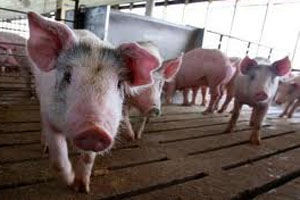Canada: Strategy to prevent the spread of PED

As the cause of the PED outbreak detected in mid-May in the Midwest US remains a mystery, the Canadian industry is taking proactive steps to help prevent its spread to Canada.
The Canadian Swine Health Board (CSHB) reports that its national strategy for dealing with Porcine Epidemic Diarrhea (PED) calls for diligence of all swine industry stakeholders.
The virus is an aggressive strain causing widespread watery diarrhea in all ages, leading to up to 100% mortality in nursing pigs. Other ages of pigs are affected as well, although not as severely as nursing pigs. Investigative teams in the US are working to establish the source of the outbreak, and it is hoped that detailed questionnaires from veterinarians in the US will provide answers as well. CSHB is in regular contact with our US colleagues.
This is the first time this disease has been seen in North America, and therefore the Canadian herd has no immunity against this virus. As a result, the Canadian industry would suffer disastrous economic losses should this disease spread to Canada. The CSHB’s Canadian Swine Health Intelligence Network (CSHIN) provides Canada a unique opportunity to monitor the health of pigs across the country. Fortunately, CSHIN data continues to indicate that the Canadian herd remains free of any signs of PED.
“Protecting the Canadian herd from this disease threat is critical to the success of our industry,” said Florian Possberg, CSHB Chair. “We all have a role to play, and the overwhelming response from the Canadian industry demonstrates the interest in doing whatever can be done.”
The CSHB was established to take a leadership role in addressing swine health risks for Canada. As such, CSHB notified the industry immediately of the PED threat, and has taken a collaborative approach in bringing together industry partners to develop a national strategy to address the PED threat. Much has already been done, and further steps have been identified to help ensure Canada remains PED-free.
Components of the national PED strategy include:
• Heightened Biosecurity: Good biosecurity is the key to stopping the spread of this disease, including ensuring that incoming animals are from healthy herds, all trucks and equipment are free of contamination, and knowing the quality and source of all incoming feed ingredients. Several technical bulletins and updates provide key information, and are available at www.swinehealth.ca.
• Effective Surveillance: Besides the important monitoring of herds through CSHIN, effective surveillance includes producers reporting any unusual signs of disease to their veterinarian, and also ensuring their veterinarian is participating in CSHIN. Producers and veterinarians can find out more about CSHIN by contacting Dr. Chris Byra, CSHIN Manager at cbyra@shaw.ca.
• Keeping Up-to-Date: The CSHB provides a free daily electronic update on swine health news. Especially now, all industry stakeholders should be receiving this to ensure they have the latest news on PED. We cannot protect against what we do not know. Subscribe to CSHB News Updates at info@swinehealth.ca.
• Risk Analysis: While fundamental initiatives to address this threat are already in progress, a national risk analysis will provide key details on further protecting the Canadian herd. Some risk assessments for PED are already underway, and consistently
addressing these factors on a national basis is critical. Issues to be considered include diagnostic testing and capacity and financial impacts for producers and the rest of the value chain.
• Control: An intervention strategy must be established so that a clear plan is in place, and can be immediately implemented, in the event of PED being found in Canada. Components of this plan include containment to prevent its spread and strategies to
eliminate the disease.
This PED strategy will continue to be revised and enhanced as more information on the disease and its spread is learned. All Canadian swine industry stakeholders are encouraged to actively participate in this collaborative national strategy.
Source: Canadian Swine Health Board







